The EIC Rain Gardens
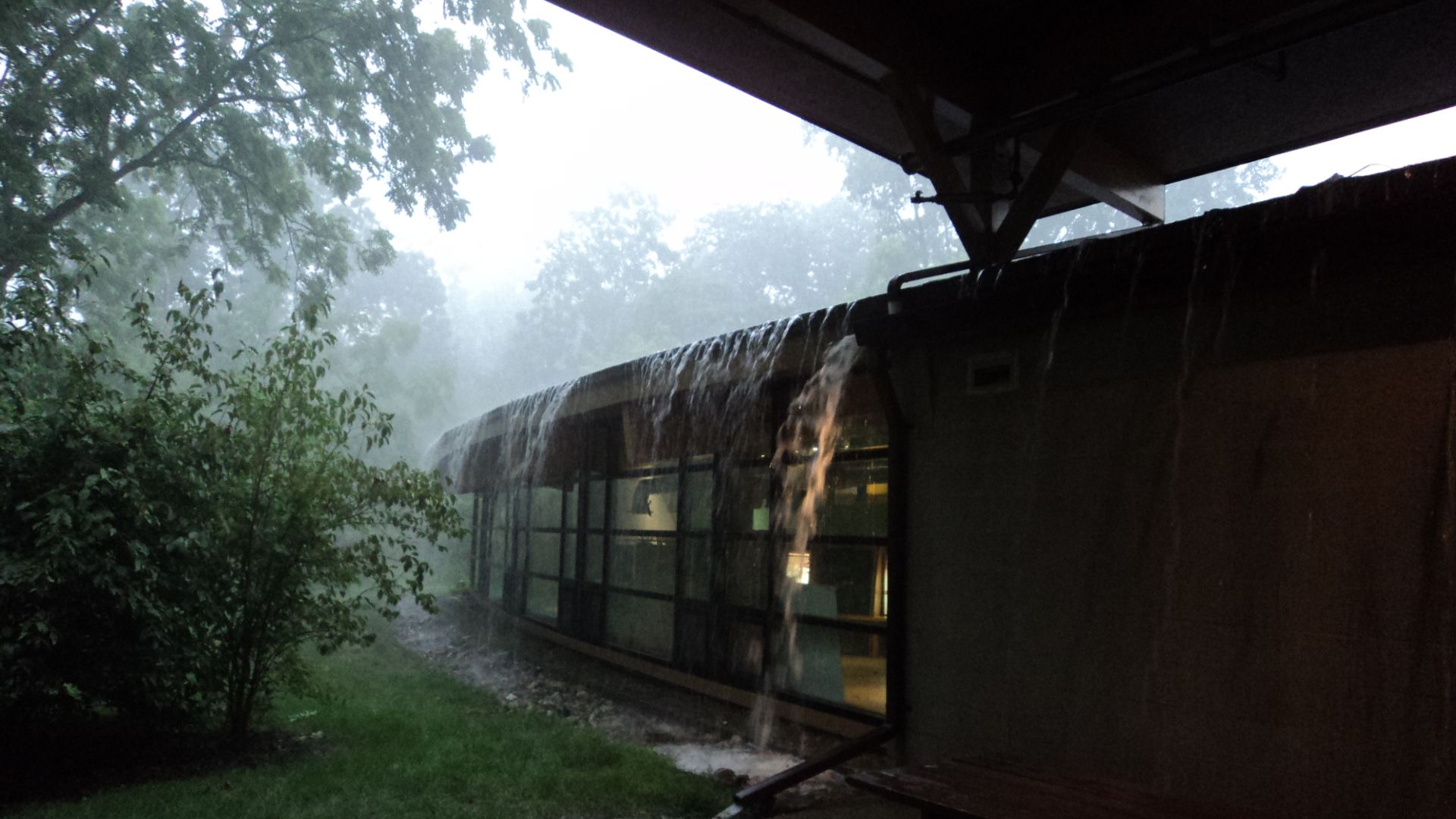 Rain gardens are depressions that retain storm water on-site and keep surface water run-off, especially from impervious surfaces (such as roofs of buildings and paved roads and walk-ways) from reaching municipal storm sewers. They filter storm water, improve water quality, and minimize soil erosion. They also foster biodiversity by providing habitat for plants such as deep-rooted native perennial species.
Rain gardens are depressions that retain storm water on-site and keep surface water run-off, especially from impervious surfaces (such as roofs of buildings and paved roads and walk-ways) from reaching municipal storm sewers. They filter storm water, improve water quality, and minimize soil erosion. They also foster biodiversity by providing habitat for plants such as deep-rooted native perennial species.
The first 1/2 acre rain garden at the EIC was established on the northeastern side of the main entrance in 2007-2008. A second 1/2 acre rain garden was established in spring 2010 outside the southeastern corner of the Center.
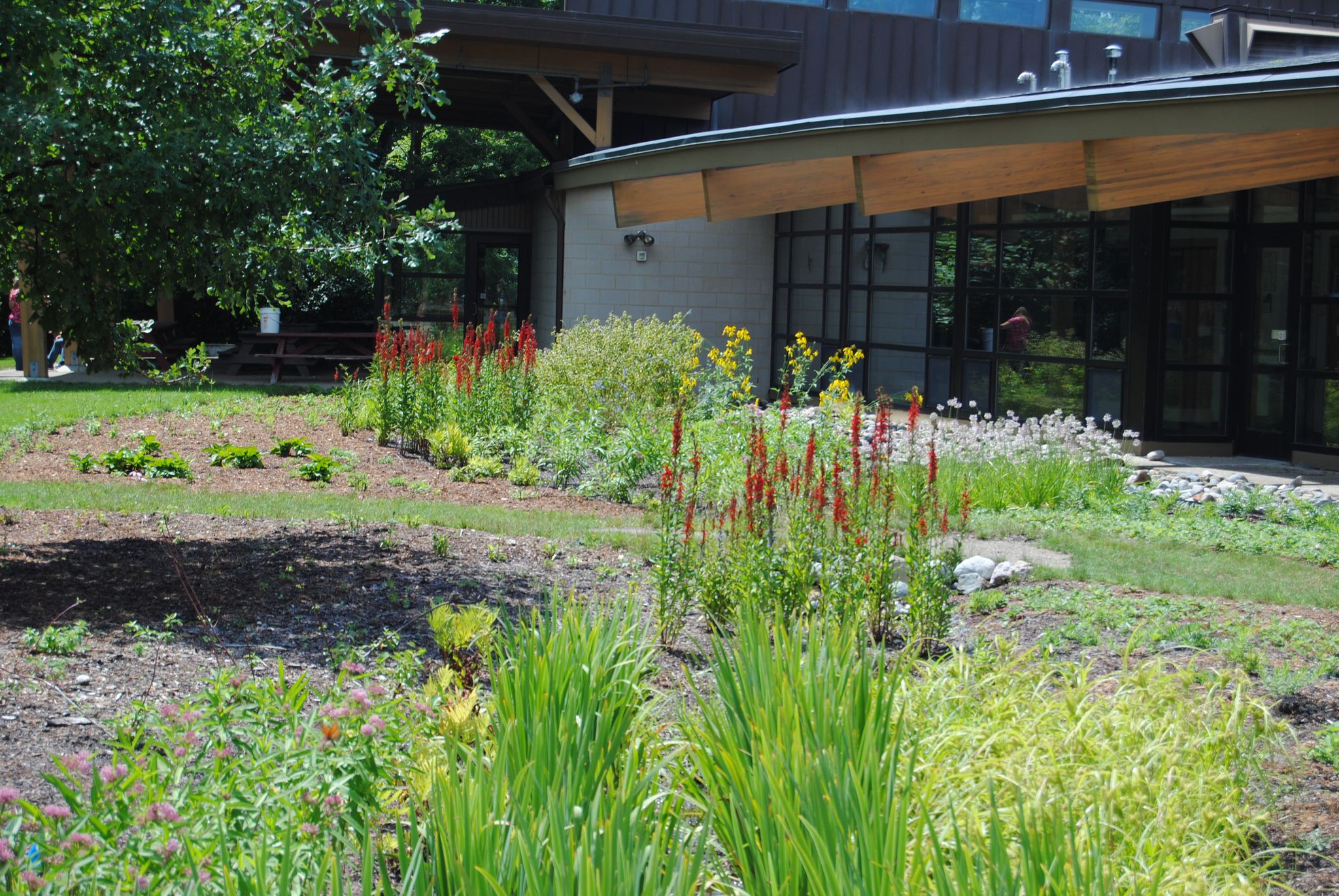 Both rain gardens were planted with native plants of southeast Michigan genotypes. These include hundreds of grasses, herbs, and shrubs representing dozens of plant species. Elderberry, butterfly weed, cardinal flower, nodding wild onion, and wild strawberry are just a few of the species that you may encounter in the rain gardens.
Both rain gardens were planted with native plants of southeast Michigan genotypes. These include hundreds of grasses, herbs, and shrubs representing dozens of plant species. Elderberry, butterfly weed, cardinal flower, nodding wild onion, and wild strawberry are just a few of the species that you may encounter in the rain gardens.
In addition to their aesthetic appeal, native plants incorporated into the rain gardens provide food and shelter for native wildlife. The Center's rain gardens are recognized as a certified Monarch Waystation through Monarch Watch, an educational outreach program in support of monarch conservation in the United States and Canada.
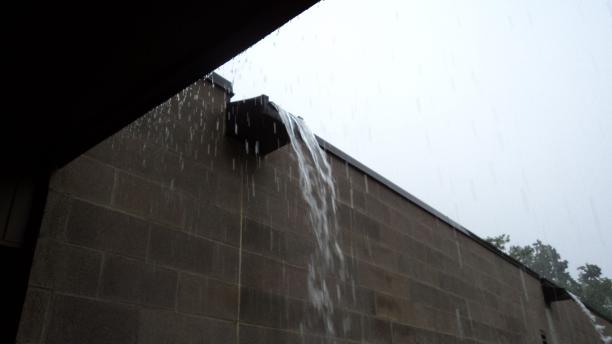
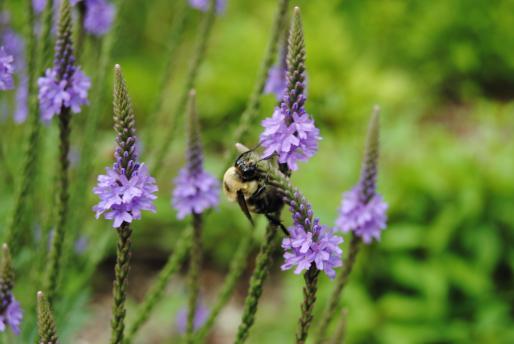
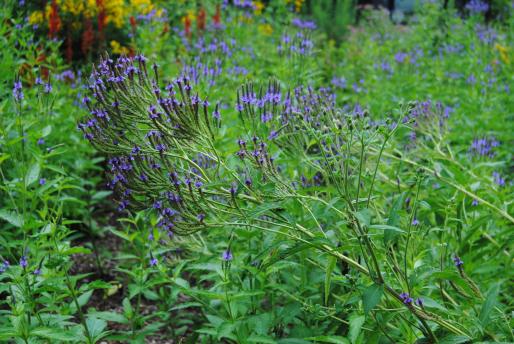
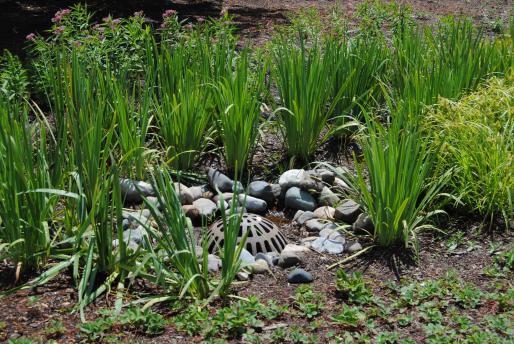
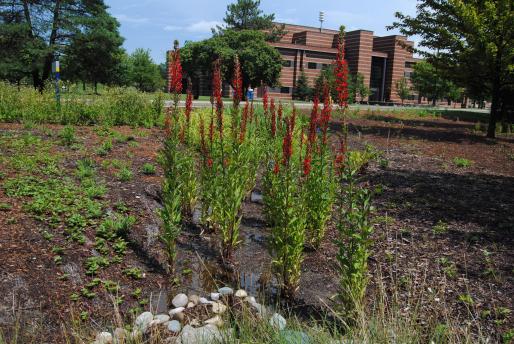
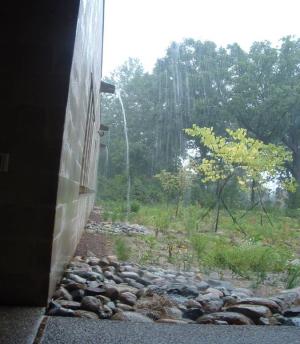
The rain gardens serve not only as a gathering place for viewing native flora and fauna, but also as models for sustainable urban landscaping. The rain gardens were made possible with the generous support of our friends from the Ford Motor Company, Friends of the Rouge, Kiwanis Club of Dearborn East, the Master Gardeners Association of Wayne County, and the Alliance of Rouge Communities.
